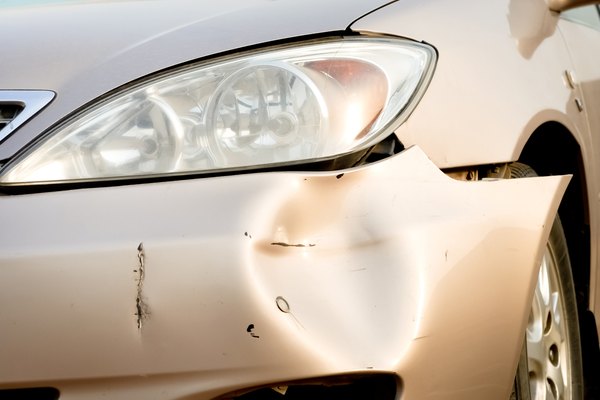What Are the Dangers of a Bad Ball Joint?
by Justin CuplerUpdated July 12, 2023
Your car’s ball joints play a crucial role in keeping the vehicle's tires flat against the road as the suspension travels up and down. There are ball joints located on the farthest edge of both the upper and lower control arms, connecting them to the steering knuckles on each side of the vehicle. Over time, ball joints can go bad and must be replaced to avoid potential safety issues.
Tire Wear

A failed ball joint can result in the wheels moving in unintended directions due to inertia, causing uneven tire wear. When a tire consistently rides on any section other than the center, it leads to accelerated tire wear. Therefore, having a bad ball joint can result in more frequent tire replacements, affecting the longevity of your front tires.
Suspension Damage

At times, ball joints can lock up, transferring the movement they should absorb to other components. Control arm bushings typically bear the brunt of this transferred movement. These rubber bushings wear out easily and can be expensive to replace. Therefore, when ball joints go bad, it can lead to damage and deterioration of the vehicle’s suspension system.
Inspection Failure

In states where vehicles undergo annual inspections, a faulty suspension component such as a ball joint can cause the vehicle to fail the inspection. No state will pass a vehicle with a defective ball joint or other compromised parts of the suspension system. It is essential to ensure your ball joints are in good condition to comply with inspection requirements.
Breakage

The most severe symptom of bad ball joints is breakage. Ball joints can break in two ways: the ball detaching from the socket or stud breakage. In either case, the outcome is catastrophic. When a ball joint breaks, the affected wheel becomes free to move in any direction. This can lead to a loss of control over the steering wheel, jeopardizing the safety of the driver and passengers. Typically, the wheel turns outward, forcefully contacting the fender and dragging the tire until the brakes are applied. In unfortunate situations, this can result in damage to the fender, tire, and multiple suspension components.
Driving Conditions
Driving on uneven roads can put additional stress on ball joints and other suspension components. Potholes and bumps can exacerbate wear and tear on the front wheels and lower ball joints, potentially leading to premature failure. Therefore, it is important to drive cautiously on uneven road surfaces and have your ball joints inspected regularly, especially if you frequently encounter such conditions.
Regular Maintenance
Regular inspection and maintenance of your vehicle’s steering system, as well as the lubrication of ball joints, are essential to ensure their proper functioning and longevity. Adequate lubrication helps reduce friction and wear on the ball joints, extending their lifespan. Consider replacing worn ball joints with new ones to maintain the integrity of your vehicle's front end and ensure a smooth and safe driving experience. It is also advisable to have your ball joints inspected during routine oil changes to identify any potential issues early on.
TIP
It is vital to pay attention to the symptoms of bad ball joints, such as clunking noises, squeaking, or uneven tire wear. Driving on rough roads or encountering potholes can accelerate wear and tear on ball joints and other front suspension components.
5 Dangers of a Bad Ball Joint
Below is a list of 5 dangers of a bad ball joint:
- Steering Instability: Ball joints are crucial for maintaining the proper alignment and stability of the vehicle's front wheels. When a ball joint is worn or damaged, it can affect the steering control and cause instability.
- Tire Wear and Alignment Issues: A worn ball joint can cause uneven tire wear, typically on the inside or outside edges of the tire. This happens because the faulty ball joint alters the suspension geometry, leading to improper wheel alignment. Over time, this can lead to the need for premature tire replacement and compromise the vehicle's handling and stability.
- Suspension Component Damage: A bad ball joint can put additional stress on other suspension components, such as control arms and bushings. The excessive movement and vibrations caused by a worn ball joint can accelerate wear and damage to these components.
- Breakage and Separation: In severe cases, a worn ball joint can eventually break or separate completely. This catastrophic failure can cause the affected wheel to collapse or detach from the suspension, resulting in a complete loss of control.
- Increased Road Noise and Vibrations: A failing ball joint can cause noticeable clunking, popping, or squeaking noises, especially when going over bumps or making turns.
Writer Bio
Justin Cupler is a professional writer who has been published on several websites including CarsDirect and Autos.com. Cupler has worked in the professional automotive repair field as a technician and a manager since 2000. He has a certificate in broadcast journalism from the Connecticut School of Broadcasting. Cupler is currently studying mechanical engineering at Saint Petersburg College.






